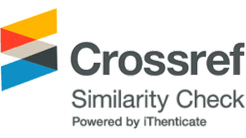-
Review
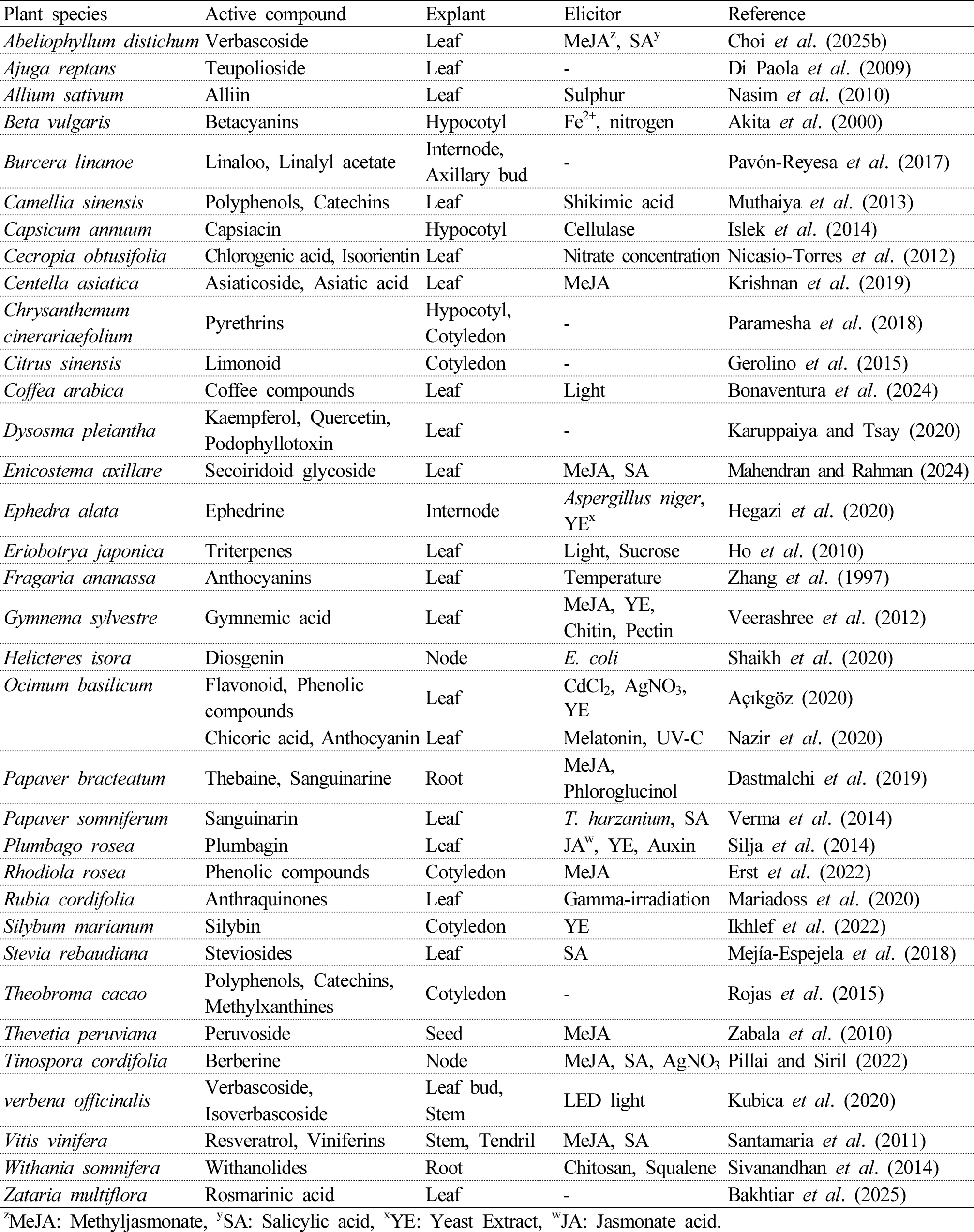
-
Utilization of Plant In Vitro Culture for the Production of Secondary Metabolites
이차대사물질의 생산을 위한 식물 기내배양기술의 이용
-
Mi-Suk Seo, Soyoung Park, Kihun Ha, Kongsik Shin
서미숙, 박소영, 하기훈, 신공식
- Plant tissue culture is one of the key biotechnological techniques for the stable and efficient production of plant secondary metabolites. Unlike conventional …
- Plant tissue culture is one of the key biotechnological techniques for the stable and efficient production of plant secondary metabolites. Unlike conventional cultivation, plant tissue culture enables the large-scale production of these compounds without being affected by climate or environmental conditions. Numerous studies have been conducted to optimize this technique. In particular, callus induction, adventitious root culture, and hairy root culture using Agrobacterium rhizogenes have been employed to produce various bioactive secondary metabolites. These metabolites, derived from plant tissue cultures, have been applied in a wide range of industries, including food and cosmetics, and in the production of high-value pharmaceuticals such as taxol and camptothecin, which are known for their anticancer properties. This review aims to analyze recent trends in the production of secondary metabolites using various plant tissue culture techniques and to provide insights for the identification of high-value functional materials with strong industrial applicability. - COLLAPSE
-
Utilization of Plant In Vitro Culture for the Production of Secondary Metabolites
-
Research Article
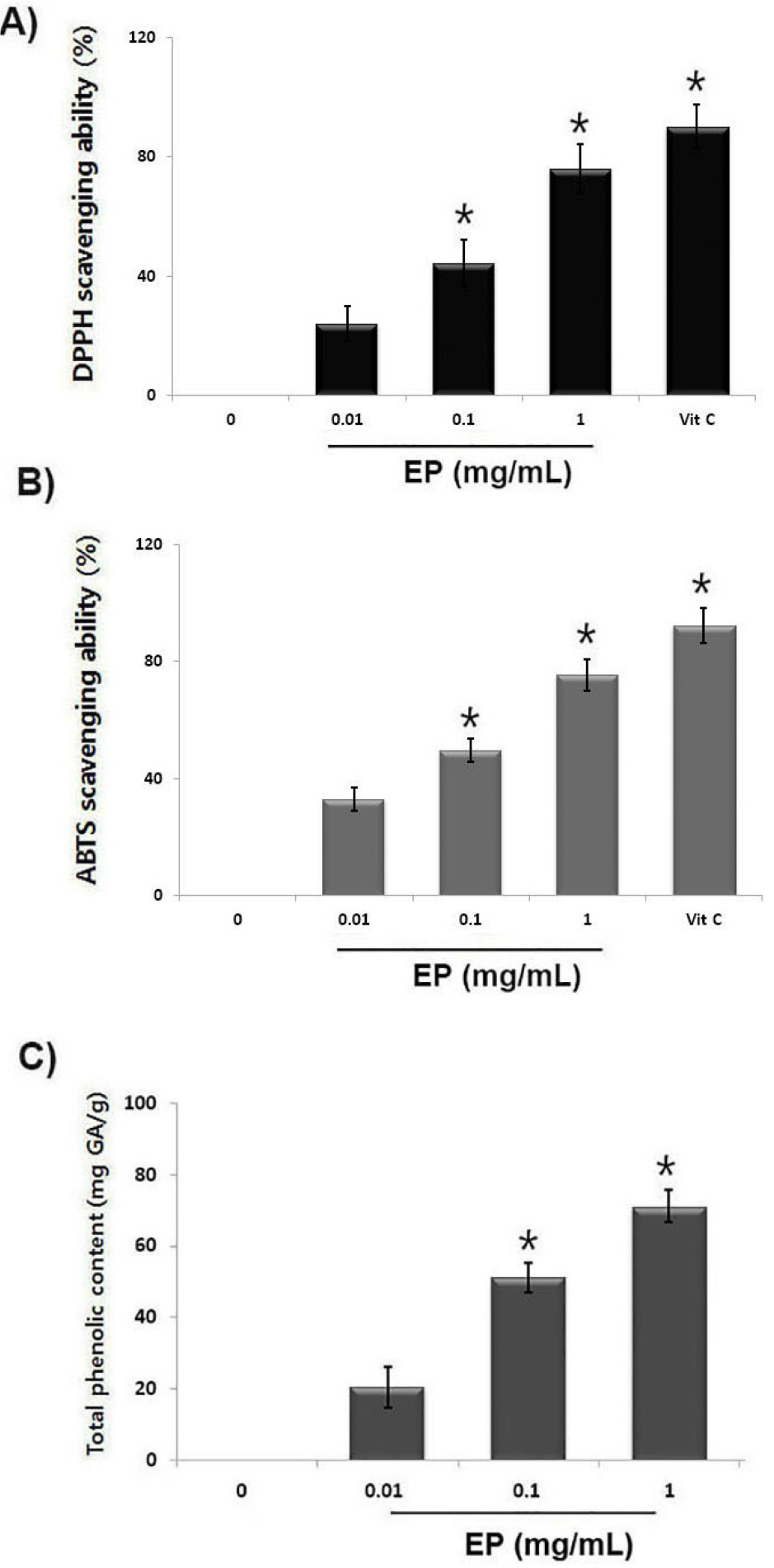
-
Eclipta prostrata Ameliorates the Mast Cell-mediated Allergic Inflammation via Inhibition of NF-κB / caspase-1 Activation
한련초(Eclipta prostrata)의 caspase-1 활성억제를 통한 비만세포 매개 알레르기 염증 억제 효과
-
Mi-Ok Yang, Noh-Yil Myung
양미옥, 명노일
- Herbal medicine are important resources for new drug development due to their various biological properties. Eclipta prostrata (EP) is a perennial …
- Herbal medicine are important resources for new drug development due to their various biological properties. Eclipta prostrata (EP) is a perennial herb which is traditionally used for diseases treatment. In this study, we investigated the anti-inflammatory mechanism of EP on the mast cell-mediated allergic inflammatory response. The antioxidant activity of EP was evaluated using 2,2-diphenyl-1-picrylhydrazy (DPPH) scavenging ability and 2,2′-azino-bis(3-ethylbenzothiazoline-6-sulfonic acid) (ABTS) cation scavenging. To investigate EP’s pharmacological mechanisms on allergic inflammation, we assessed its impact on histamine secretion and interleukin (IL)-6, IL-8, and tumor necrosis factor (TNF)-α release in activated human mast cells-1 (HMC-1). Additionally, the ameliorative effects of EP on activation of nuclear factor-κB (NF-κB) and caspase-1 were measured. EP demonstrated strong DPPH and ABTS+ radical scavenging activity, and significantly reduced histamine, IL-6, IL-8 and TNF-α secretion. Moreover, EP effectively attenuated the activation of NF-κB and caspase-1 in activated- HMC-1. Conclusively, these finding suggest that EP has potential for allergic inflammatory therapy. - COLLAPSE
-
Eclipta prostrata Ameliorates the Mast Cell-mediated Allergic Inflammation via Inhibition of NF-κB / caspase-1 Activation
-
Research Article
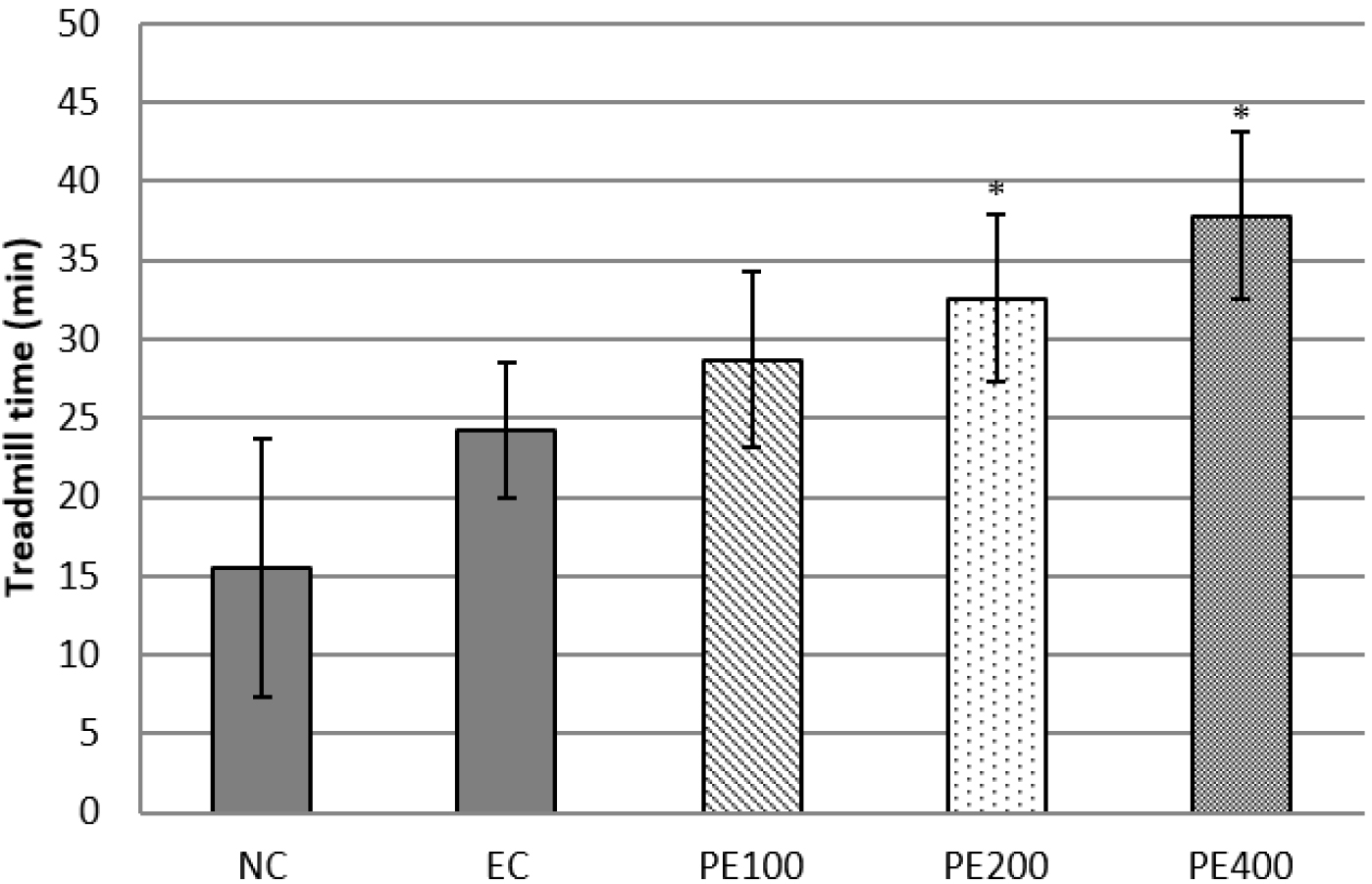
-
Immature Mandarin (Putgyul) Extract Improves Exercise Performance in a Forced-Exercise Test in Mice
풋귤 추출물이 생쥐의 강제 운동 부하 실험에 미치는 운동 능력 향상 효과
-
Woong Heo, Joo-Won Jeon, Ji-Gweon Park, Byung-Ho Kim, Yong-Hwan Jung
허웅, 전주원, 박지권, 김병호, 정용환
- This study was to examine the effect of immature mandarin (Putgyul) extract with water (PE) on exercise endurance performance in mice subjected …
- This study was to examine the effect of immature mandarin (Putgyul) extract with water (PE) on exercise endurance performance in mice subjected to forced exercise testing. We also examined the exercise-improving effects of PE on treadmill running and forced swimming tests in C57BL/6 mice. Mice were divided into five groups: non-exercise control (NC), exercise control (EC), exercise with PE 100 ㎎/㎏ (PE100), exercise with PE 200 ㎎/㎏ (PE200), exercise with PE 400 ㎎/㎏ (PE400) Groups. Mice were orally administered PE once daily for 6 weeks. After 2 weeks of PE administration, mice underwent treadmill exercise twice a week for 4 weeks and the forced swimming test on the last day. Consequently, the PE200 and PE400 groups demonstrated an increase in both treadmill exercise time and forced swimming time compared to the EC group. In addition, the PE100, PE200 and PE400 groups serum biochemical analysis showed a decrease in LDH levels, suggesting a potential reduction in fatigue. These results indicate that immature mandarin improves exercise performance through a decrease in LDH levels. This suggests the possibility of utilizing immature mandarin as a supplement for exercise. - COLLAPSE
-
Immature Mandarin (Putgyul) Extract Improves Exercise Performance in a Forced-Exercise Test in Mice
-
Research Article
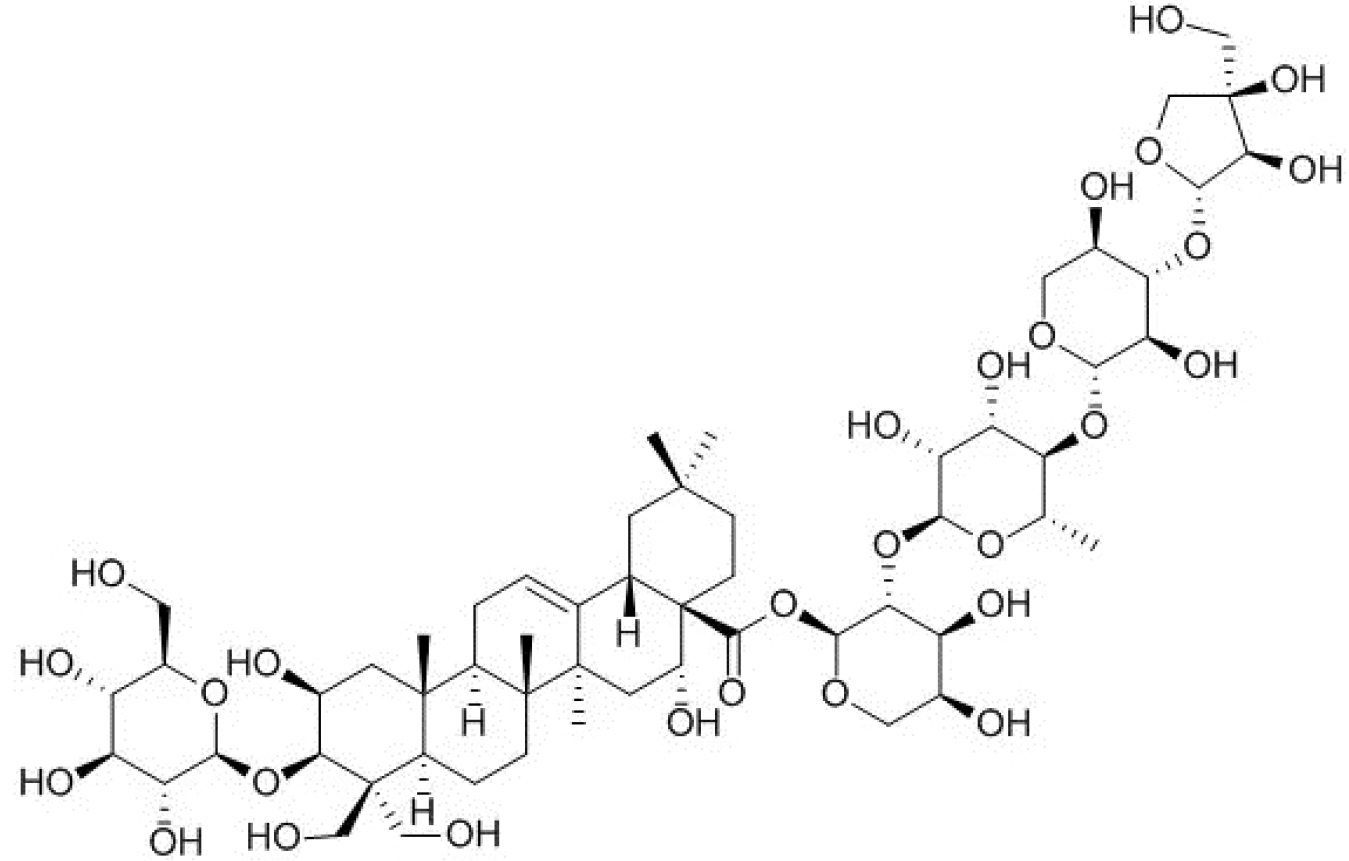
-
Analysis of Platycodin D Content and Biological Activities of Platycodon grandiflorum Extract
도라지 추출물의 Platycodin D 함량 분석 및 생리활성 평가
-
Jung Hwan Choi, So Chong Kim, Jeong Ho Lee
최정환, 김소정, 이정호
- This study evaluated the platycodin D content and the antioxidant, anti-inflammatory, and digestive enzyme activities of Platycodon grandiflorum water extract (PGW) to …
- This study evaluated the platycodin D content and the antioxidant, anti-inflammatory, and digestive enzyme activities of Platycodon grandiflorum water extract (PGW) to assess the potential for developing health foods using Platycodon grandiflorum. As a result of HPLC analysis, the platycodin D content was analyzed to be 3.674 ㎎/g. The SC₅₀ values of DPPH and ABTS radical scavenging activities were 23.29±0.09 ㎎/mL and 17.32±0.06 ㎎/mL. Total polyphenol and total flavonoid contents were 38.9±0.7 ㎎GAE/g and 30.7±0.7 ㎎QE/g, respectively. In HepG2 cells, antioxidant activity measured using the CAA assay showed 43.2% reduction in ROS production at 400 ㎍/mL PGW. No cytotoxicity was observed for PGW in RAW 264.7 cells and Caco-2 cells, and production of nitric oxide (NO) was inhibited in a concentration dependent manner. Inhibition of NO production was 2.9 ㎍/mL in RAW 264.7 cells and 1.88 ㎍/mL in Caco-2 cells in PGW 100 ㎍/mL treatment group. PGW also suppressed the production of inflammatory cytokines (TNF-α, IL-1β, and IL-6) in concentration dependent manner. In addition, amylase and protease enzyme activities were observed in PGW, and increased enzyme activity was observed according to the concentration of the extract. The results indicate that it can be used as basic data for the development of health food. - COLLAPSE
-
Analysis of Platycodin D Content and Biological Activities of Platycodon grandiflorum Extract
-
Research Article
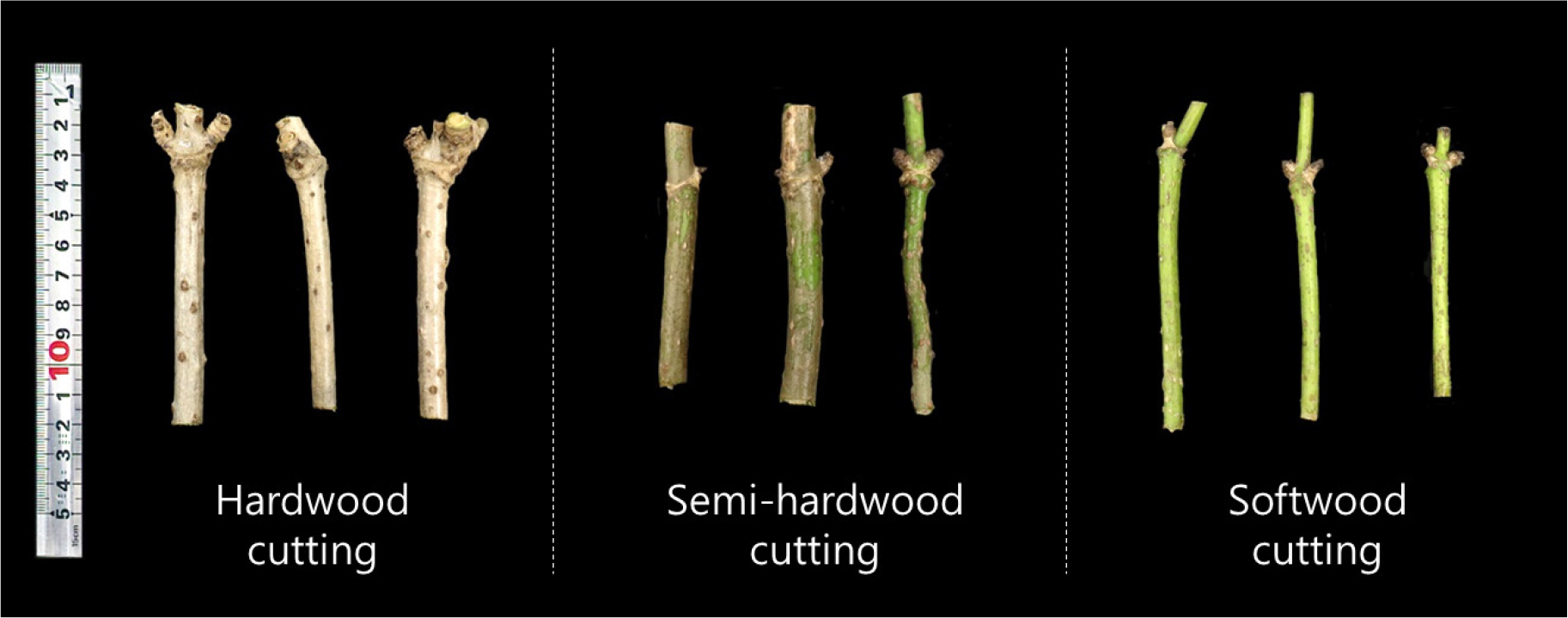
-
Rooting Characteristics of Sambucus racemosa L. subsp. pendula (Nakai) H.I.Lim & Chin S.Chang by Cutting Conditions and Plant Growth Regulators, Endemic Species in Korea
한국 특산식물 말오줌나무의 삽수 조건 및 식물생장조절제에 따른 발근특성
-
Min Ji Kwon, Dae Hui Jeong, Ho Jun Son, Jeong Ho Song
권민지, 정대희, 손호준, 송정호
- The present study investigated the rooting characteristics of Sambucus racemosa subsp. pendula, a Korean endemic plant, based on different cutting conditions …
- The present study investigated the rooting characteristics of Sambucus racemosa subsp. pendula, a Korean endemic plant, based on different cutting conditions and plant growth regulator (PGR) treatments. Rooting responses were evaluated under three cutting conditions (type, length and diameter) and four types of PGRs (IAA, IBA, NAA and GA3), each applied at concentrations of 100, 500, and 1,000 ㎎/L. Significant differences were observed among treatments depending on cutting type and length. Hardwood cuttings exhibited higher rooting rates than softwood cuttings. Cuttings of 11∼12 ㎝ in length exhibited the most favorable rooting performance. Cuttings with a diameter of 13∼14 ㎜ had the greatest root length. Among PGR treatments, cuttings treated IBA at 100 ㎎/L (28.0 ± 4.0%), 500 ㎎/L (30.0 ± 6.3%) and NAA 1,000 ㎎/L (32.0 ± 2.4%) resulted in the most favorable rooting responses. These findings suggest optimal cutting conditions and PGR concentrations for the propagation and conservation of this species. - COLLAPSE
-
Rooting Characteristics of Sambucus racemosa L. subsp. pendula (Nakai) H.I.Lim & Chin S.Chang by Cutting Conditions and Plant Growth Regulators, Endemic Species in Korea
-
Research Article
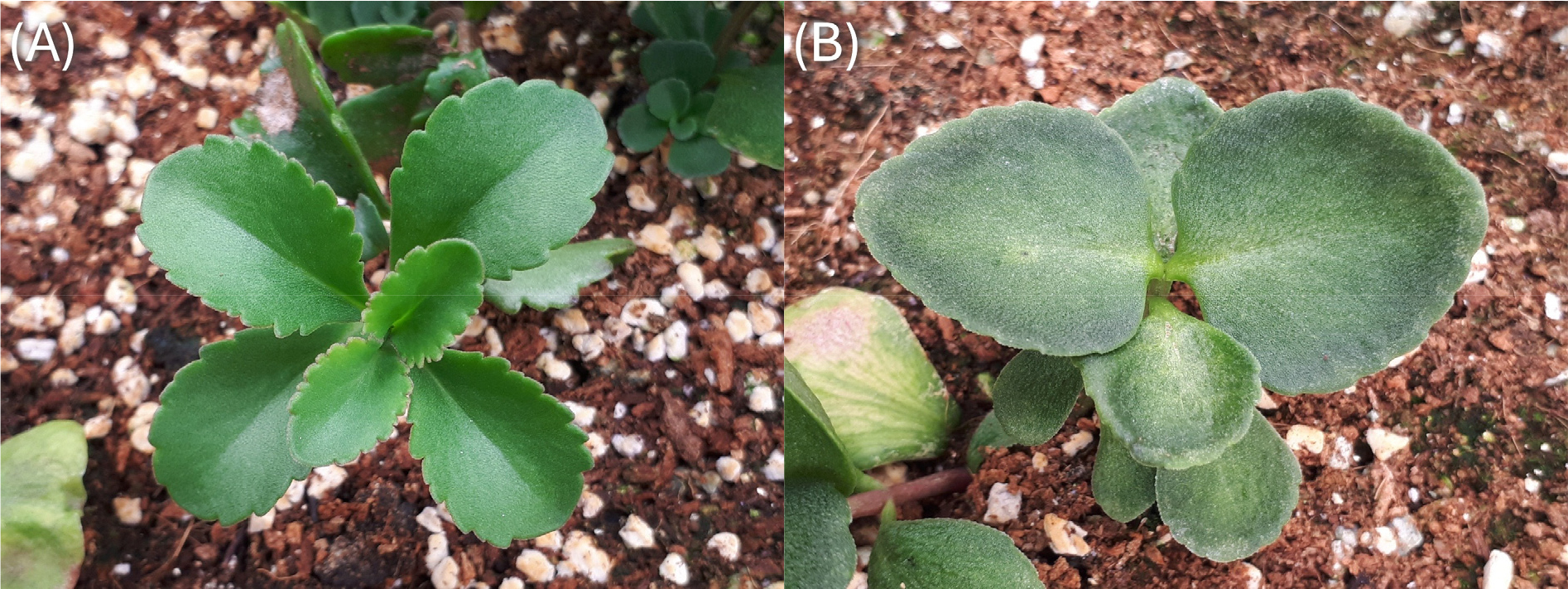
-
Chloroplast Genome Analysis of Two Korean Native Species of Phedimus, Phedimus zokuriensis (Nakai) 't Hart and Phedimus latiovalifolium (Y. N. Lee) D. C. Son & H. J. Kim
기린초속 한국 자생종 속리기린초(Phedimus zokuriensis (Nakai) 't Hart)와 태백기린초(Phedimus latiovalifolium (Y. N. Lee) D. C. Son & H. J. Kim)의 엽록체 유전체 분석
-
Gyoungju Nah, Ji Ran Jeong, Jae Hwan Lee, Samuel Lee, Sang Yong Nam
나경주, 정지란, 이재환, 이사무엘, 남상용
- Phedimus zokuriensis (Nakai) 't Hart and Phedimus latiovalifolium (Y. N. Lee) D. C. Son & H. J. Kim are native Korean plant …
- Phedimus zokuriensis (Nakai) 't Hart and Phedimus latiovalifolium (Y. N. Lee) D. C. Son & H. J. Kim are native Korean plant species traditionally used for ornamental and medicinal purposes. This study reports the complete chloroplast genome sequences of both species using Illumina sequencing technology. The chloroplast genome of P. zokuriensis is 151,728 bp in length, comprising a large single-copy (LSC) region of 83,067 bp, a small single-copy (SSC) region of 16,697 bp, and two inverted repeat (IR) regions of 25,982 bp, containing a total of 132 genes. The chloroplast genome of P. latiovalifolium is 151,796 bp, with an LSC region of 83,133 bp, an SSC region of 16,699 bp, and two IRs of 25,982 bp, containing 133 genes. Phylogenetic analysis involving 20 related species confirmed both species as members of the genus Phedimus and revealed that they form distinct evolutionary lineages separate from Sedum. Comparative analysis identified highly variable regions in the chloroplast genomes that may be valuable for species identification and population genetics. These genomic resources provide essential baseline data for future research on genetic diversity, evolutionary relationships, conservation strategies, and the potential economic utilization of Phedimus species. - COLLAPSE
-
Chloroplast Genome Analysis of Two Korean Native Species of Phedimus, Phedimus zokuriensis (Nakai) 't Hart and Phedimus latiovalifolium (Y. N. Lee) D. C. Son & H. J. Kim
-
Research Article
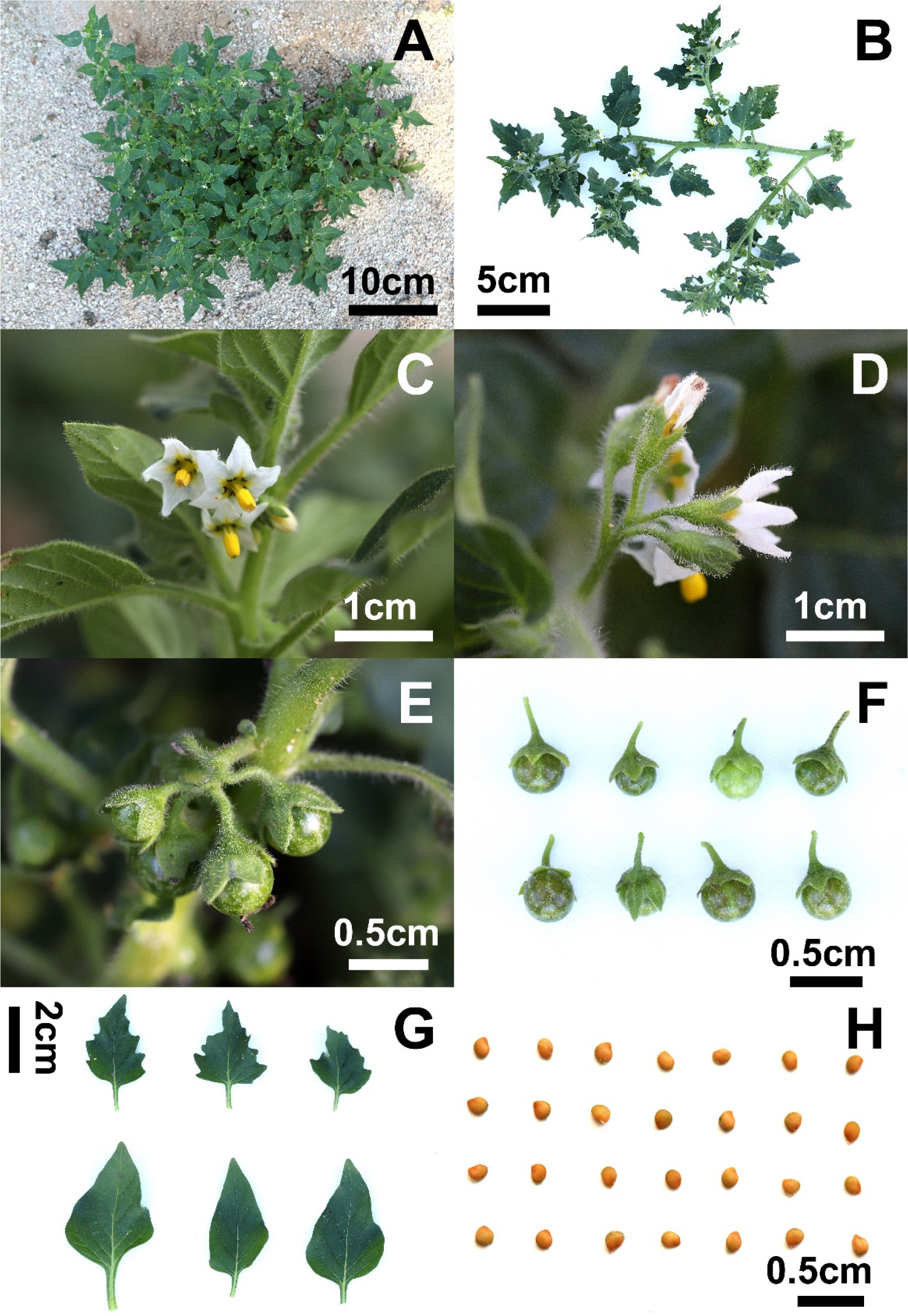
-
New Record of an Alien Plant, Solanum physalifolium Rusby (Solanaceae) in Korea
한반도 미기록 외래식물: 긴털까마중
-
Young Chul Kim, Hyun Hee Chae, Seon Mi Lee
김영철, 채현희, 이선미
- The habitat of Solanum physalifolium Rusby (Solanaceae) is the dry valleys of the Andes Mountains at an elevation of 1,500∼3,500 m, where …
- The habitat of Solanum physalifolium Rusby (Solanaceae) is the dry valleys of the Andes Mountains at an elevation of 1,500∼3,500 m, where it is primarily distributed along streams or under the shade of small trees. It was confirmed that the species is sporadically and in small clusters distributed in fallow fields and vegetable farms in Songjeong-ri, Jinbu-myeon, Pyeongchang-gun, Gangwon-do, Republic of Korea in 2024. Based on observations in cultivated fields and their surroundings at an elevation of 600∼700 m, it is presumed that the main pathway of spread is through the introduction and establishment via contaminated crop seeds. This species can be distinguished from S. nigrum, S. nigrum var. humile, S. americanum by plant with densely glandular-pubescent hair and S. sarrachoides by the leaf blades 2∼6 ㎝ long, 1.4∼3.2 ㎝ wide and calyx lobe tips are not anthesis. Korean name is ‘Gin-teol-kka-ma-jung’ based on its densely glandular-pubescent hairs. We provide a detailed description, photographs, habitat details, and a taxonomic key to related taxa. - COLLAPSE
-
New Record of an Alien Plant, Solanum physalifolium Rusby (Solanaceae) in Korea
-
Research Article
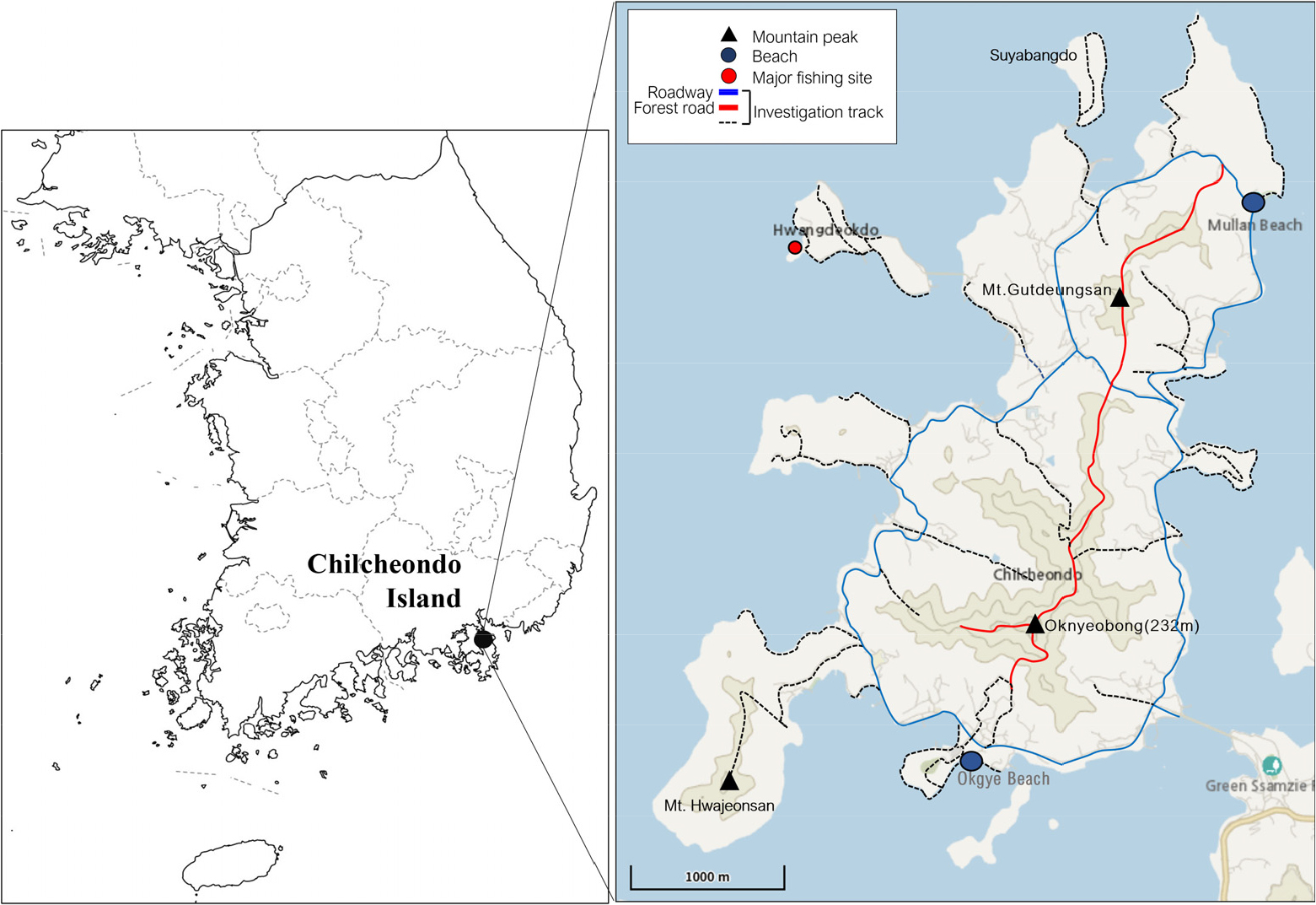
-
A Flora of Vascular Plants in Chilcheondo Island (Gyeongsangnam-do Geoje-si)
칠천도(경남 거제시)의 관속식물상
-
Eun Mi Lee, Jeongyun Byeon, Narae Yun, Bo-Mi Nam, Joo Hwan Kim, Jun Hyoung Jang, SeonJoo Park
이은미, 변정윤, 윤나래, 남보미, 김주환, 장준형, 박선주
- Since the opening of a bridge connecting Chilcheondo Island to the mainland in 2000, human activity on the island has increased dramatically. …
- Since the opening of a bridge connecting Chilcheondo Island to the mainland in 2000, human activity on the island has increased dramatically. This is believed to have resulted in ecological issues, yet systematic research into the island's vascular plant flora has been lacking. In order to address this research gap, a detailed flora survey was conducted from March 2023 to September 2024. This survey resulted in the identification of a total of 516 taxa (473 species, 6 subspecies, 34 varieties, and 3 forma). Of these, six are endemic to Korea, nine are listed on the Red List, and 84 are taxa of floristic regional indicators , thereby supporting the conservation value of the area. Concurrently, a total of 76 alien species were recorded, five of which are designated as ecologically disruptive species by the Ministry of Environment. In particular, Sicyos angulatus L. was found spreading rapidly by climbing on surrounding native vegetation along sandy coasts. These results highlight the importance of ongoing monitoring and management to conserve the native plant communities of Chilcheondo Island, providing scientific evidence for future biodiversity conservation and sustainable management strategies on the island. - COLLAPSE
-
A Flora of Vascular Plants in Chilcheondo Island (Gyeongsangnam-do Geoje-si)
-
Research Article
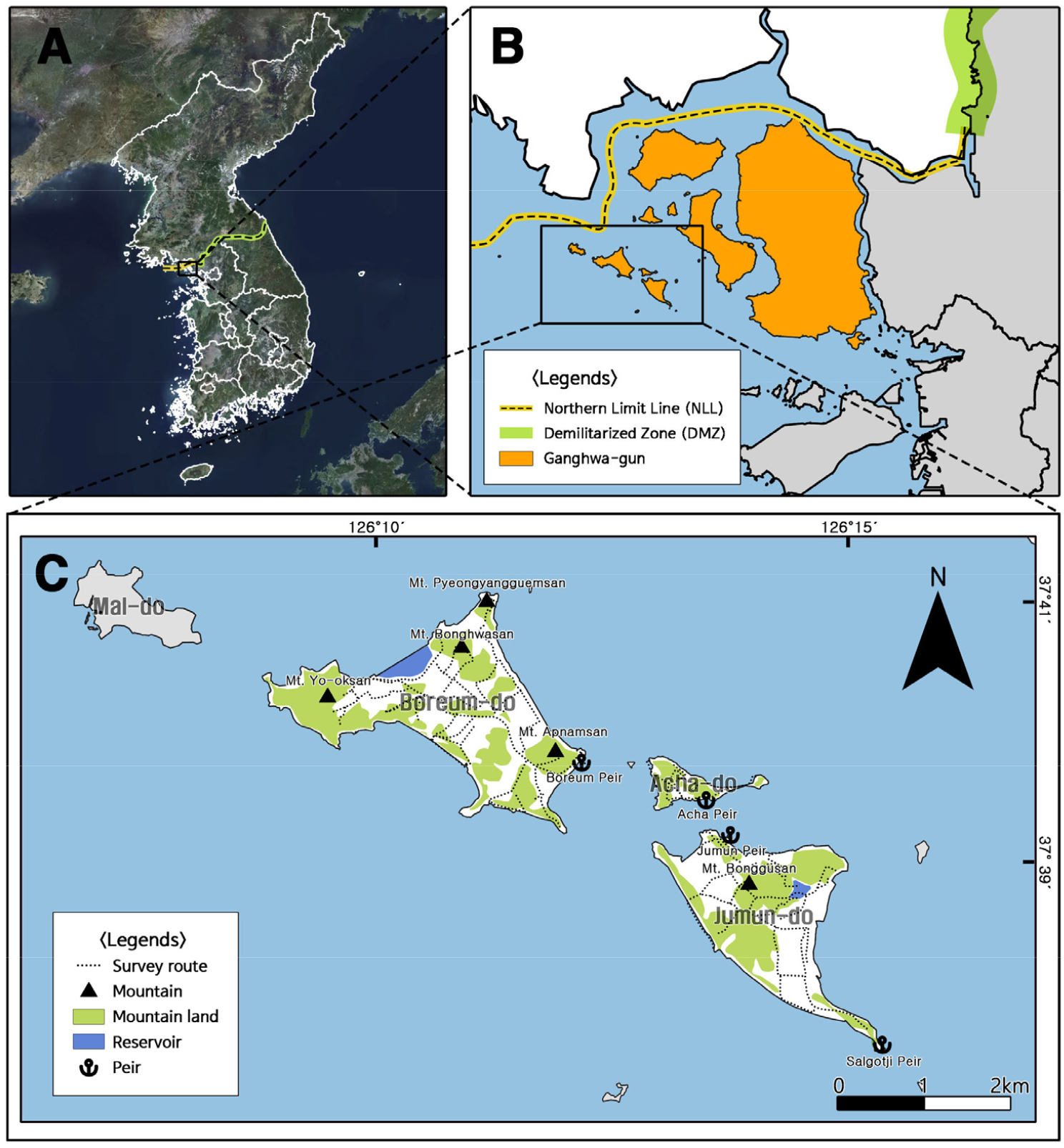
-
Flora of Boreumdo, Jumundo, and Achado Islands (Seodo-myeon, Gangwha-gun, Incheon)
볼음도, 주문도, 아차도(인천광역시 강화군 서도면)의 식물상
-
Nuree Na, Byung-Jun Park, Jaesang Chung, Seungju Jo, Hyeong-Bok Cho, Jihun Lee, Subin Gwak, Beom Kyun Park
나누리, 박병준, 정재상, 조승주, 조형복, 이지훈, 곽수빈, 박범균
- The vascular flora of Boreumdo, Jumundo, and Achado islands, located in Seodo-myeon, Ganghwa-gun near the Northern Limit Line (NLL) in Korea, was …
- The vascular flora of Boreumdo, Jumundo, and Achado islands, located in Seodo-myeon, Ganghwa-gun near the Northern Limit Line (NLL) in Korea, was surveyed over a total of thirteen days between March to November 2024. In addition, previously collected specimens deposited in the Herbarium of the Korea National Arboretum (KH) were reexamined. As a result, a total of 621 taxa were documented, comprising 108 families, 338 genera, 568 species, 12 subspecies, 36 varieties, 3 forms, and 2 hybrids. Among them, four taxa were listed as rare plants in the National Red List of Korea, including one endangered (EN), two vulnerable (VU), and one near-threatened (NT) species. Seven taxa were endemic to the Korean Peninsula. A total of 66 floristic target species were identified: one taxon in grade V, four in grade IV, eight in grade III, 24 in grade II, and 29 in grade I. Forty-one halophytes taxa were also recorded. Additionally, 97 alien plant taxa and eight ecosystemdisturbing species were identified. Based on a survey of their practial applications, 585 taxa were assigned to seven functional groups: 394 edible, 477 medicinal, 22 aromatic, 236 industrial, 278 ornamental, 219 used for ecological restoration, and 296 used as forage or compost. This study provides an updated and comprehensive checklist of vascular plants for Boreumdo, Jumundo, and Achado islands. - COLLAPSE
-
Flora of Boreumdo, Jumundo, and Achado Islands (Seodo-myeon, Gangwha-gun, Incheon)
Journal Informaiton
 Korean Journal of Plant Resources
Korean Journal of Plant Resources
Journal Informaiton
Journal Informaiton - close
 Korean Journal of Plant Resources
Korean Journal of Plant Resources







